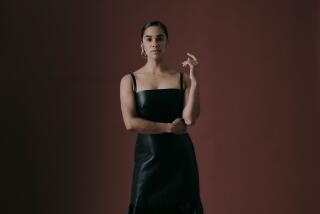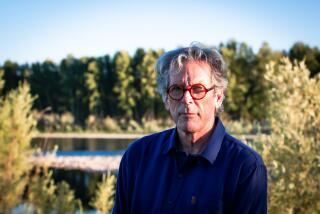From the Archives: Dancer Dies From Fall; Isadora Duncan Meets Fate
NICE (France) — Isadora Duncan, the American dancer, was killed in an automobile accident at 9:40 o’clock tonight. She was trying out a new automobile on the Promenade Des Anglais, when a gust of wind blew a long scarf which she was wearing around her neck over the side of the car. It became entangled in one of the wheels and dragged the dancer out of the machine into the roadway. Her neck was broken.
At the time of the accident Miss Duncan was accompanied by a newspaper woman, Mary Destro Parks, who came to see her with reference to the publication of her memoirs.
Feared Accident
In a conversation with a correspondent of the Associated Press yesterday, Miss Duncan said: “For the first time I am writing for money; now I am frightened that some quick accident might happen.”
The premonition of her doom was only too true. A French chauffeur was teaching her to drive the new car, which was speeding along, when the dancer met death.
The body was removed from the St. Roch Hospital to her studio tonight.
Fate seemed to have caused automobiles to play no small part in the life of Isadora Duncan. On several occasions she was injured, sometimes seriously, in automobile accidents, and in 1913 her two children, Beatrice, 5 years of age, and Patrick, 3, were drowned in the Seine River, near Paris, when their automobile ran into the river.
Her Many Accidents
Later in 1913 she was seriously injured in an automobile accident, and in May of 1924, was knocked unconscious when her car was in collision with another in Leningrad. On other occasions she narrowly escaped death from drowning and one of these accidents occurred at Nice, where she was killed.
She had traveled to virtually all parts of the world and her life was filled with experiences which took her to the highest pinnacle of artistic success and to the extremity of poverty in which she was forced to rely on the generosity of her friends to pay her debts.
In 1921 she went to Russia at what is said to have been the invitation of the soviet government to open and conduct a dancing school in Moscow. Difficulties arose, however, and she soon gave up the idea, but not before acquiring a 27-year-old Russia poet, Serge Vessinin, as a husband.
Were “Too Bourgeois”
Russia, which before her return to that country under soviet auspices, was described by her as the one place in the world where the artistic qualities inherent in a person could be expressed in their highest form, soon palled on her, and after having returned to Paris she said that even the Russian Bolshevist chieftains were “too bourgeois” for her.
In 1922, accompanied by her youthful husband, Miss Duncan once more returned to the United States and gave a series of dances, in one of which she appeared on the stage wrapped in a red silk flag.
Her offerings were received with admiration in some circles, but from other quarters she was denounced. These attacks caused her to announce publicly that she would again depart from the United States and remain in Europe, adding that it was likely that she would return to Russia.
Two Black Eyes
At a party in New York on the eve of her sailing in 1923, a quarrel arose between her and Vessinin, which resulted in Miss Duncan receiving two black eyes. This affair appeared to be the beginning of a separation and later in Paris she announced that she had sent her husband to Russia, saying that he had disturbed her in a Paris hotel. On another occasion she said he “was really too impossible.” Vessinin later committed suicide.
Only a few days ago a dispatch from Nice declared that Miss Duncan was engaged to Robert Chanler of New York. However, yesterday, Miss Duncan said that the report of the engagement was the result of a joke passed between her and Chanler at a dinner party.
________________________________________
Isadora Duncan Born at San Francisco in 1880
San Francisco. Sept. 14. (AP)
Isadora Duncan, who was killed today in Nice, is claimed by San Francisco as one of its native daughters. She was born here in 1880. In childhood play she devised dances and taught them to playmates. Later she became a dancing teacher in her mother’s school.
Her first New York appearance was in Daly’s Theater in 1895, as a fairy in “A Midsummer Night’s Dream.” After studying in Europe she appeared in London with a Shakespearean company in 1900, so inspiring Ellen Terry, herself a famous dancer, that she jumped to her feet as the dance ended and delivered an enthusiastic tribute to the younger dancer’s art.
Miss Duncan’s expressed ambition was “to rediscover the beautiful, rhythmical motions of the human body; to call back to life that ideal movement which should be in harmony with the highest physical type; to awaken once more an art which has slept for 2000 year.”
Returning to America after her 1900 London appearance, she was unimpressively received. She later came into international fame through a tour of Europe, winning praise of artists in many cities. In Russia she influenced the revival of the famed Russian ballet and founded dancing schools in European cities and New York, training a selected group of children called the Duncan girls.
Miss Duncan was frankly scornful of puritanism. She was free from conventionality, and thereby became the object of many attacks.
More to Read
Start your day right
Sign up for Essential California for the L.A. Times biggest news, features and recommendations in your inbox six days a week.
You may occasionally receive promotional content from the Los Angeles Times.






